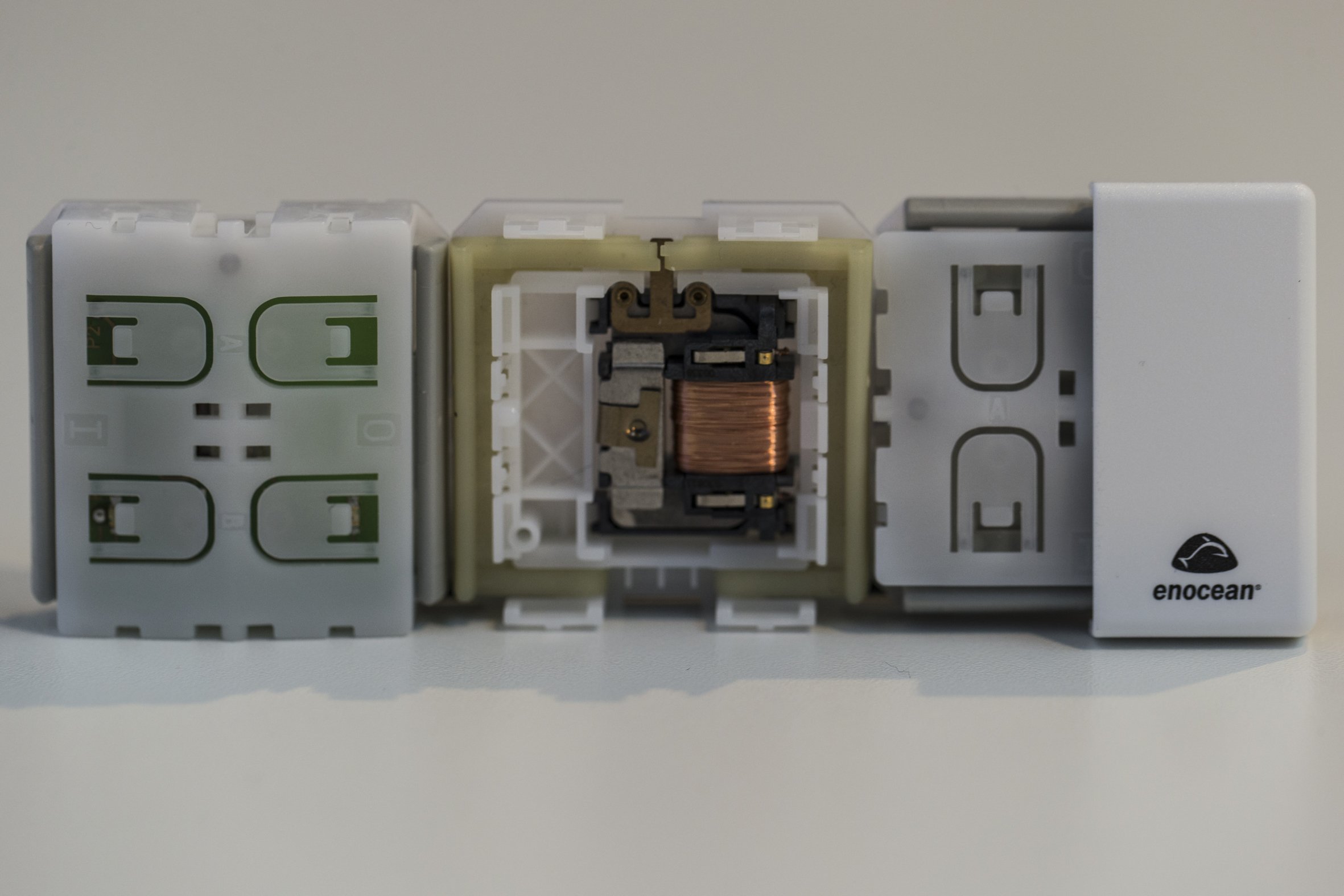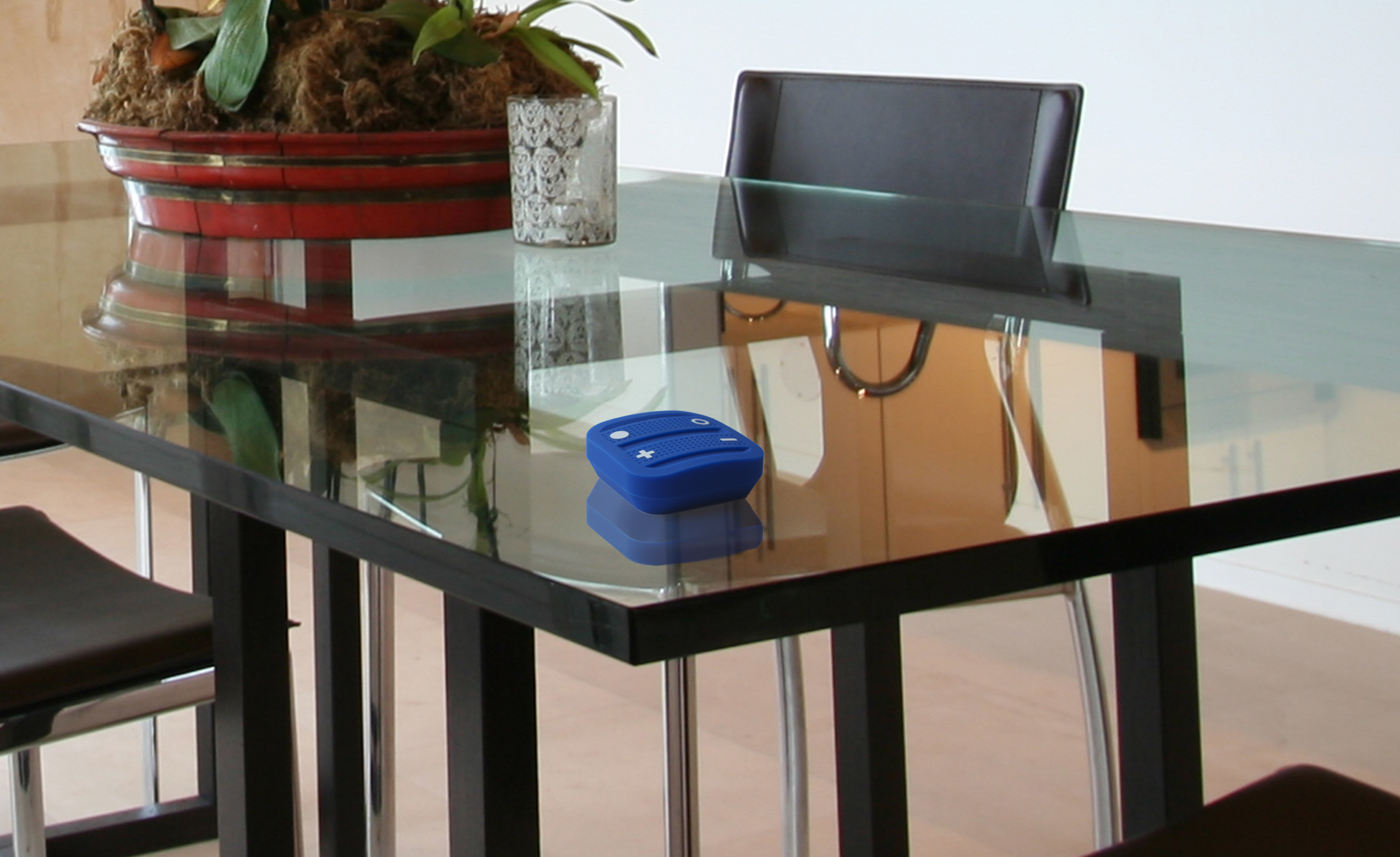Free energy for all!
Consumers are discovering how tapping in to free but overlooked energy sources can be harnessed to provide power for wireless control systems around the home.
By Thomas Gauthier, CEO, ID-RF.
Energy can be found everywhere; in the movement of doors and windows or machine components, the vibration of motors, changing temperature or variances in luminance levels. This is the principle behind energy harvesting wireless technology such as that developed by EnOcean. In the course of more than ten years, the technology has opened up three different sources of energy to power wireless modules; motion, light and temperature differences. Today, manufacturers offer more than 1,200 products and solutions based on the batteryless technology.
Now established in the commercial building automation market, more and more manufacturers are positioning energy harvesting wireless technology for the consumer sector, mainly for smart home solutions and connected applications that are paving the way to the IoT; an emerging market with high potential growth rates over the next few years. The McKinsey Global Institute estimates that the IoT will generate $2.3 trillion of global economic impact by 2025 (McKinsey Global Institute: 'Disruptive technologies: Advances that will transform life, business, and the global economy', May 2013).
Requirements of the consumer market
More than any other market, the consumer market requires innovative and user-friendly devices. Plug & play is the mantra, as the consumer market is characterised by discerning customers who expect a device to immediately work without any complex installation and offer ease of use. Besides the practical aspects, a device must foster positive emotions, people should immediately recognise the benefit of controlling more with less effort. But there is another requirement, home automation solutions are not only expected to increase the user’s comfort but also reduce energy consumption for a more eco-friendly approach to living.
With energy harvesting wireless technology, manufacturers have a solid basis to design devices that fulfil all these needs of the consumer market. Being independent from an energy source like batteries or cables, batteryless devices can be flexibly placed and need no maintenance after installation. In addition, harvesting the energy from freely available sources avoids battery waste and brings the clean-tech aspect to consumer devices. Finally, the batteryless operation emphasises a modern, future-oriented lifestyle. It offers a technology which is distinct from run-of-the-mill items meeting consumers’ demand for a ‘cool’ product.
The wireless communication based on the standard ISO/IEC 14543-3-10 is optimised for a reliable range of up to 30 metres through walls. The EnOcean protocol can also be connected to other wireless standards such as WiFi or TCP/IP to seamlessly integrate the devices into a home automation system. This allows the development of a complete smart home range or of single products that can complement existing solutions. Standardised application profiles, defined by the EnOcean Alliance, ensure that solutions from different vendors can work together in a system.
Complete platform

For a smooth integration the energy harvesting wireless technology is composed of optimally matched components including energy harvesters, ultra-low power electronics and reliable wireless communications forming a complete platform. This platform eases the design of new products as the manufacturer does not need to have experience in batteryless technology. The PTM 210 switch module is a good example; it combines the electro-mechanical energy harvester and the ultra-low power radio module in a plastic housing. This form factor fits in any standardised switch design worldwide so that the manufacturer can take the complete module and integrate it in a switch shell – a ready-made batteryless device that generates energy by the tap of a finger press.
Energy harvesting wireless technology is without doubt a bright and breathtaking solution, but for the development of consumer devices, this is only one part of the job. To meet the sector’s demands it is not just about building the shell around a wireless module. A well-finished and user-friendly product requires more than this from a manufacturer and a brand. The aim is rather to create an innovative device based on an innovative technology.
The four-button Soft Remote from Franco-Chinese company ID-RF is a good example of an innovative and user-friendly product based on the PTM 210 module. First of all, it is a batteryless switch. Apart from this, it has a modern design with a surface made of soft-touch silicone material, giving it an attractive and haptic style. The exchangeable soft skin can be customised and modified in order to adapt the switch to any type of environment. At the same time, it is spill and shock resistant, so that consumers can use it everywhere in the house, even in the kitchen or in the bathroom. An embedded magnet can fix the switch to any metallic surface without affecting the radio performance.
The Soft Remote is the result of several hours of engineering, design studies and marketing which had to solve some challenges. The designers tested different materials and dimensions to ensure the best interface between the surface and the batteryless switch module. The focus of the tests was a haptic experience and an attractive design that does not restrict the switch’s mechanical functionality. The optimal look and feel was additionally confirmed in the field by many design awards.

Keeping the proven form factor of the batteryless switch module to preserve its functionality, the design and shell of the switch itself had to be newly created to combine a contemporary style with a good user experience. For the product design, ID-RF in-house designers have worked closely together with a French/Chinese design university in Shanghai which helps to develop conceptual ideas for new products. This joint work and exchange of experiences resulted in a product suitable for the consumer market.
Challenge of added value
The platform approach to energy harvesting wireless technology helps keep the integration hurdles for manufacturers low. Having access to components that are already optimally matched makes it easier to replace battery power with energy harvesting, as the ready-made technology provides 95% of the functionality. Batteryless operation already achieves a highly attractive unique selling proposition, but for the consumer market manufacturers always have to think how they can add value even when the technology behind is fascinating; good design and ease of use are mandatory to attract the consumer mass market.
Energy harvesting wireless solutions are highly attractive for manufacturers to gain a strong market position. The technology, track-proven and mature, is a reliable alternative to batteries bringing the eco-friendly character to a device. The particular challenge is to create a product design that stands out of the crowd but does not affect the technology and comes at a competitive price. Nevertheless, manufacturers should embrace the challenge; in the highly competitive consumer market, batteryless and user-friendly devices are a game changer. It’s high time for manufacturers to go further in their creative thinking.










